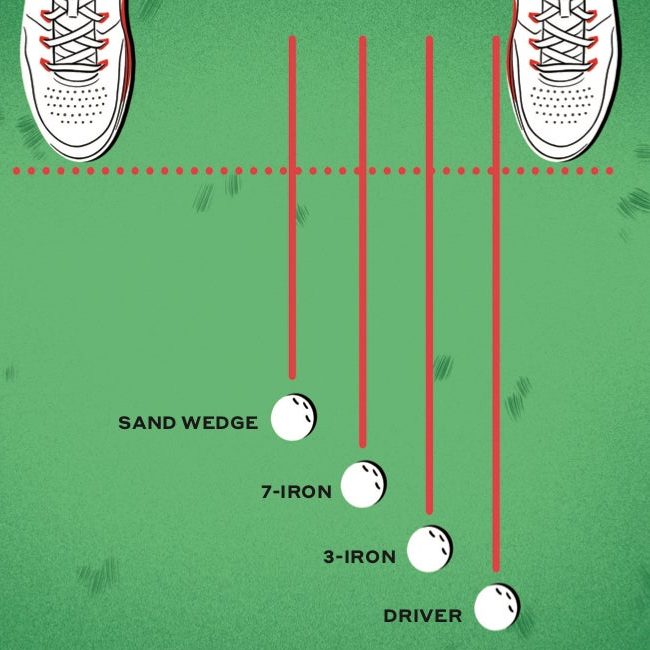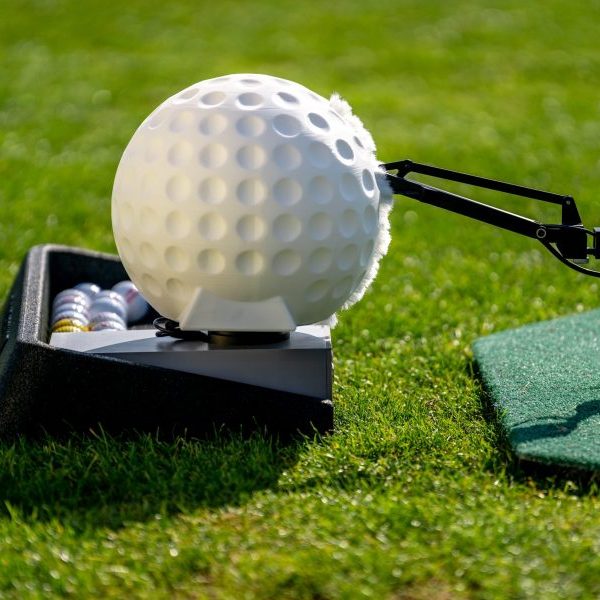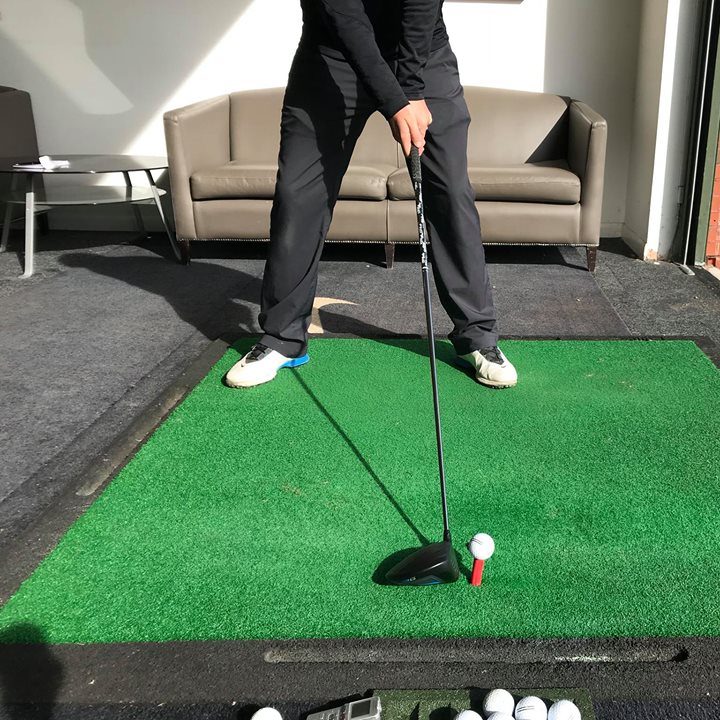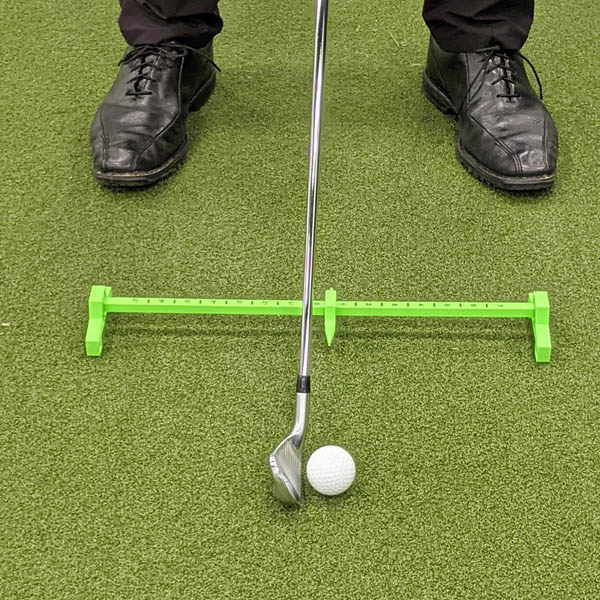The Importance of Ball Position in Golf
In the realm of golf, the position of the golf ball in your stance can dramatically influence the outcome of your swing. It is a detail that many golfers, whether beginners or seasoned, oftentimes overlook—the art and science of where the ball lies before the clubface meets it. Ball positioning is critical for enabling the correct contact with the ball and maximizing control over the shot’s direction, trajectory, and spin.
Getting the ball placement right is not just about consistency—it’s about having the advantage over every shot one makes. For different golf clubs and different situations on the course, the ball’s position requires careful adjustments. Whether it’s using a driver to achieve maximum distance off the tee or a wedge for precision on a short shot, each club has its unique ball position for optimal performance.
With the right knowledge and practice, understanding ball placement can transform a golfer’s game. It affects the angle of attack, the point of impact, and ultimately, the flight of the ball. Learning to vary the ball’s position for the chosen club and the desired shot is a fundamental skill that can lead to more successful and enjoyable rounds of golf.
By refining golf ball placement, golfers can fine-tune their play, rectify common mistakes, and witness considerable improvements in their game. This is one fundamental that requires as much attention and practice as mastering your swing or perfecting your putting technique.

Mastering Driver Ball Position for Maximum Distance
Achieving the greatest distance with a driver begins with proper golf ball placement. For a powerful and high-launching drive, the ball must be positioned correctly. Many golfers fail to maximize their drive due to incorrect ball positioning. Placing the ball too far forward can result in a slice, while too far back may cause an unwanted low angle of attack.
The ideal position for a driver is just inside the left heel for right-handed golfers, opposite for the left-handed. This allows for a sweeping motion and a powerful upswing at the point of contact, launching the ball high into the air. To find this position, start with feet together, take a small step with the left foot towards the target, and a larger step away with the right foot.
Consistency in this position promotes the desirable ‘rainbow trajectory’ — where the ball arcs high and travels a considerable distance before landing. The key is to maintain a repeated, correct ball position for every drive, adjusting as needed for individual play styles and club choices. Remember to adjust your shoulders and body alignment as well since these can impact the path of your swing.
Mastering the driver ball position is a simple yet impactful way to see significant improvement in distance off the tee. Practice this placement diligently and watch as your drives become longer and more consistent. Keep the placement consistent, and enjoy the benefits of powerful, precision driving in your golf game.
Optimizing Fairway Shots and Hybrids Placement
Optimizing your fairway shots and hybrids starts with golf ball placement. Proper positioning can lead to better contact, accuracy, and distance. Here are some tips to help refine your play with these clubs.
- For Long Irons: Position the ball just forward of center in your stance. This encourages a downward strike, which is crucial for getting the ball into the air with these clubs.
- For Hybrids: Treat them like your long irons. Their design aims to replace long irons, so they perform best with a similar ball position, which is just forward of center.
- Avoid Common Mistakes: With both fairway woods and hybrids, a frequent error is to place the ball too far forward. This can lead to tops or thin shots that lack control and distance. Keep it just forward of center to ensure a solid hit.
- Adjust for Your Club: Each club in your bag may require a slight adjustment in ball placement. Be aware of this and adjust accordingly to get the best performance from each shot.
- Practice Consistency: Repetition leads to consistency. Spend time on the range practicing your ball placement for these clubs to build muscle memory.
Mastering your fairway and hybrid shots is about finding the right golf ball placement. Spend time working on these tips, and notice the improvement in your game on the course.

Strategies for Escaping the Rough
When you find your golf ball nestled in the rough, effective ball placement is key for escape. Placement can make the difference between a successful recovery and a continued struggle. Here are simple strategies to improve your chances when tackling this challenge:
- Set the Ball Back: In thick rough, move the ball slightly back in your stance. This helps you strike the ball with a steeper angle, cutting through the grass more effectively.
- Adjust Your Club Selection: Choose a club with more loft. Higher lofted clubs can help lift the ball out of dense grass, minimizing the impact of the rough.
- Take a Firm Stance: Plant your feet firmly and prepare for resistance. A stable base will allow for a more forceful swing through the tough grass.
- Swing with Authority: Use a steep backswing and a powerful downward hit. Imagine chopping down to create the force needed to push through the heavy grass and pop the ball out.
- Avoid Overcompensation: Don’t let the rough intimidate you into changing your swing mechanics drastically. Stick to your fundamentals but with added emphasis on a downward strike.
By applying these straightforward strategies, your golf ball placement in the rough will become more effective. This could lead to better results and a more confident approach to each challenging situation on the course.
Adjusting Ball Position for Slopes: Upslopes and Downslopes
Playing on slopes requires smart golf ball placement. Whether you face an upslope or downslope, adjustments are vital. Here’s how to handle each situation effectively:
- For Upslopes: Place the ball forward in your stance. This helps match your swing path with the slope. Lean your weight slightly back to counter the incline.
- For Downslopes: Move the ball back in your stance. Put more weight on your front foot. This promotes a ball-first contact, preventing turf interference.
In both scenarios, align your body with the slope. This means your shoulders are parallel to the ground’s angle. It ensures a more stable swing through the uneven terrain. Make small practice swings to feel the slope and adjust your balance before the shot.
Remember to choose the right club too. Upslopes may need a less lofted club while downslopes may call for more loft. This compensates for the change in launch angle caused by the slope.
Practice these golf ball placement techniques. They help you conquer tricky slopes and improve your overall play. Experience will make these adjustments become second nature on the course.
Chipping: Mastering Short Game Ball Placement
Mastering the art of chipping is essential to improving your golf game. The position of the golf ball in your stance can make a major difference in the quality of your short game shots. Precise ball placement for chipping can improve contact, control, and consistency, leading to better results around the greens.
- Center Your Ball: For standard chips, place the ball in the center of your stance. This helps with balance and control.
- Narrow Your Stance: Bring your feet closer together. This stance aids in stability and precision.
- Body Alignment: Lean slightly towards the target. It promotes a descending blow, improving ball contact.
- Use the Bounce: Position the ball to utilize the club’s bounce. This prevents digging and encourages a smoother shot.
- Club Choice Matters: Select the right club for the desired flight and roll. Experiment with different clubs to find what works.
- Practice: Spend time perfecting your placement and technique. Repetitive practice builds confidence and consistency.
By focusing on these simple tips, you’ll see a significant improvement in your chipping game. Refine your golf ball placement, and watch as your scores drop and your enjoyment of the game increases.

Putting Perfection: Finding the Sweet Spot
Perfecting your putting starts with finding the sweet spot for golf ball placement. Many players struggle with consistency on the greens because their ball is not positioned optimally. Here are actionable tips to refine your putting through proper ball placement:
- Position Forward of Center: Keep the ball just ahead of the center in your stance. This helps the putter strike the ball with a slight upward motion, promoting a smoother roll.
- Align Your Dominant Eye: Knowing your dominant eye can help with alignment. Place the ball where your dominant eye can see the line of the putt better.
- Consistent Stance: Keep a steady and balanced stance. This will help you maintain the same ball position for each putt.
- Practice the Setup: Use training aids or markers to practice your ball placement. Regular practice leads to consistent, accurate putts.
- Minimize Variables: Don’t change your ball position frequently. Find what works and stick with it for reliable results.
By focusing on these simple golf ball placement techniques, you’ll likely see an improvement in your putting game. Find your sweet spot, and let the confidence in your stroke grow with each round played.
Professional Insights on Ball Placement: Minor Tweaks for Major Impact
Minor adjustments to your golf ball placement can have a big impact on your overall performance. Here’s how small placement changes can drastically improve your game.
Finding Your Ideal Driver Position
Start with minor tweaks to find your ideal driver ball position. Shift the ball inside your left heel and observe your drives. If slicing, try moving the ball slightly back. For hooking, move it forward. Repeat and find what works best for you.
Fine-tuning for Irons and Hybrids
With irons and hybrids, a slight forward shift promotes better contact. Experiment on the range; notice how small moves affect the flight and control. Adjust slowly and watch your shots improve.
Adjusting for Short Game Success
In the short game, small changes reign supreme. Narrow your stance and center the ball for chips. Place the ball forward for pitches. These tweaks help use the club’s design to your advantage.
Precision Putting Adjustments
For putting, position the ball where you can best see the line. Experiment with ball placement and notice how your putter’s contact changes. It’s all about rolling the ball smoothly.
Practice Leads to Perfection
Invest time on the practice green and driving range. Make minor adjustments, then test and refine them. Your game will show the benefits of these minute, but critical, changes.
By applying these professional insights and adjustments, you can unlock a new level of golfing excellence. Let small tweaks lead to big results.
